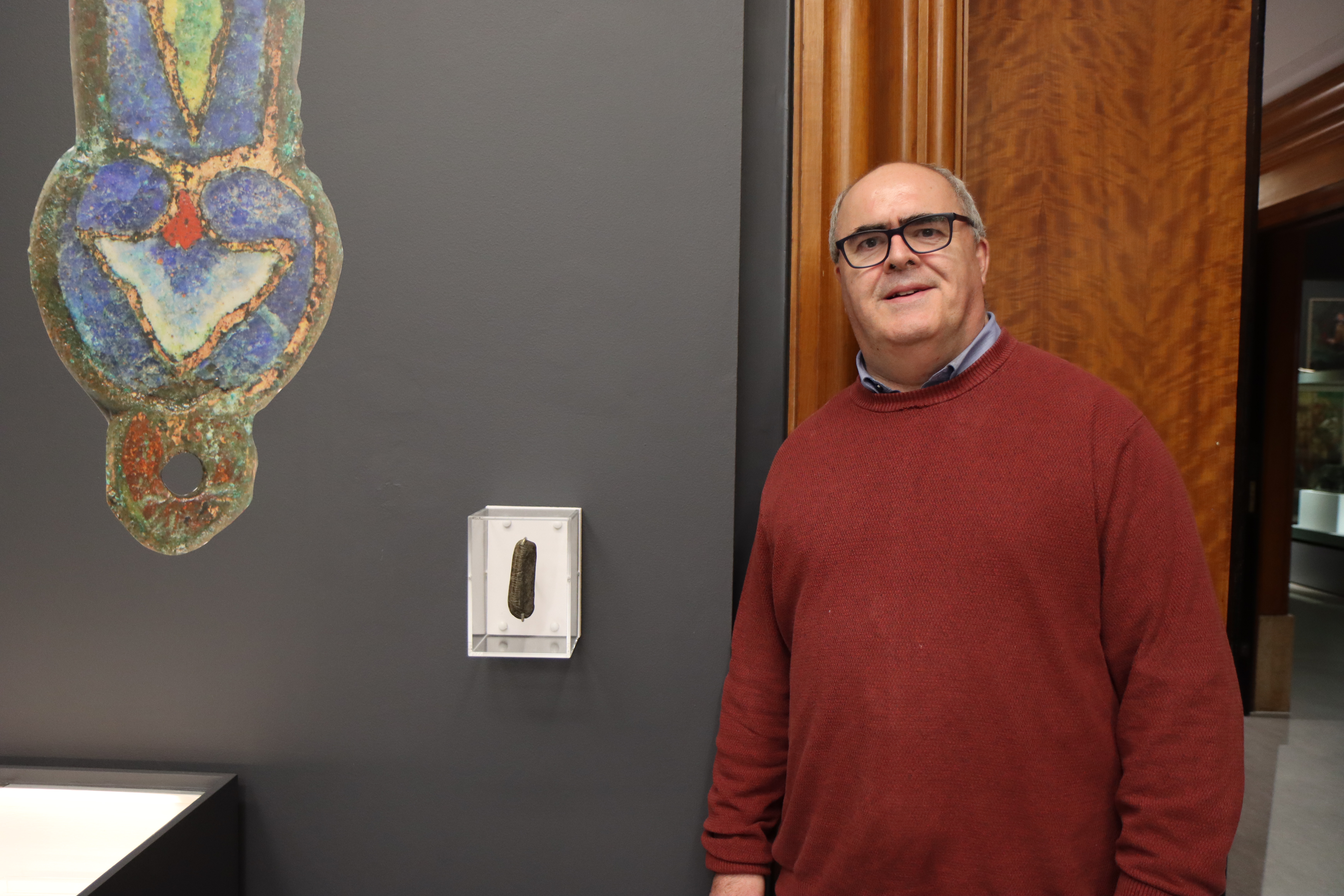Geography Teacher in England Finds Stone With 1,600-Year-Old Inscriptions in His Garden
The rock is covered in ogham, an alphabet made up of parallel lines used for writing in the Irish language
:focal(4093x2728:4094x2729)/https://tf-cmsv2-smithsonianmag-media.s3.amazonaws.com/filer_public/22/8d/228d9f45-231d-4006-8e88-7c61e207c296/covgm_2023_32ar_a_2.jpg)
In the spring of 2020, Graham Senior was pulling weeds in his garden in Coventry, England, when he unearthed a rock with some unusual markings. He didn’t know exactly what he’d stumbled upon, but he thought it might be something noteworthy.
He was right. The rock was covered in 1,600-year-old markings from an early medieval alphabet known as ogham, reports the Guardian’s Dalya Alberge.
Ogham, which consists of groupings of parallel lines, was used to write an early version of the Irish language beginning around the fourth century. These markings were usually inscribed in materials such as stone.

Over the weekend, the newly discovered rock went on display at Coventry’s Herbert Art Gallery and Museum. It is featured in a new exhibition, “Collecting Coventry,” alongside a variety of other artifacts from the museum’s collections.
The rectangular gray rock measures roughly four inches long and weighs about five ounces. Inscriptions can be seen on three of its sides. Senior, a 55-year-old geography teacher, found it buried about four or five inches deep in one of his flowerbeds. After washing it off, he snapped a few photos and sent them to a relative who is an archaeologist.
/https://tf-cmsv2-smithsonianmag-media.s3.amazonaws.com/filer_public/b9/a9/b9a9f4e8-553c-4b2d-ad64-0c8b7d72c1fa/1004478_65561f5319146.jpg)
The relative suggested he contact the Portable Antiquities Scheme, an initiative run by the British Museum that records artifacts discovered by members of the public. Since the program launched in the late 1990s, it’s recorded more than 1.4 million items, many of which were found by metal detectorists.
Archaeologist Teresa Gilmore, a regional liaison for the project, reviewed Senior’s photographs and was immediately intrigued. She contacted Katherine Forsyth, a Celtic studies expert at the University of Glasgow, who identified the inscription as ogham.
The ogham script was likely carved into the rock sometime during the fifth or sixth century, though the markings may have been made as early as the fourth century. According to the listing in the Portable Antiquities Scheme’s database, the rock is probably mudstone or shale.
The inscription reads: “Maldumcail / S / Lass.” Researchers aren’t sure what “S / Lass” means, but one theory is that it refers to a location. They think “Maldumcail” is a person’s name, likely “Mael Dumcail.” The stone’s purpose is also unclear, Gilmore tells the Guardian.
/https://tf-cmsv2-smithsonianmag-media.s3.amazonaws.com/filer_public/7e/e5/7ee5f587-3434-447e-a545-94252f69e1f3/wmid634a9a.jpg)
“It could have been a portable commemorative item,” she adds. “We don’t know. It’s an amazing little thing.”
Ogham stones are usually found in Ireland or Scotland, so unearthing one in central England is unusual. Per the Guardian, the newly discovered artifact may have been transported by early medieval monks or clerics moving around to different monasteries.
According to the Heritage Council, a government body in Ireland that aims to preserve the nation’s history and traditions, ogham is a “highly unusual” writing system that usually involves carving along the natural edge of a stone. This arrangement of the markings makes it a “uniquely three-dimensional script.” So far, more than 400 examples of ogham stones or fragments have been discovered.
/https://tf-cmsv2-smithsonianmag-media.s3.amazonaws.com/accounts/headshot/SarahKuta.png)
/https://tf-cmsv2-smithsonianmag-media.s3.amazonaws.com/accounts/headshot/SarahKuta.png)